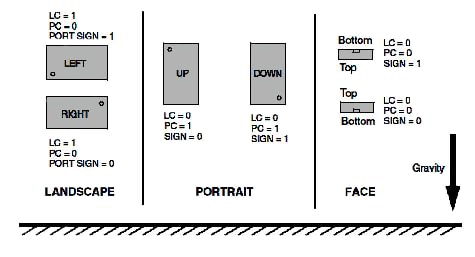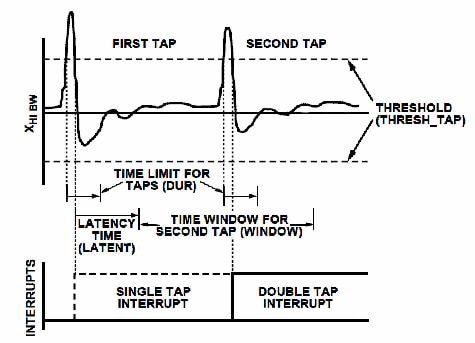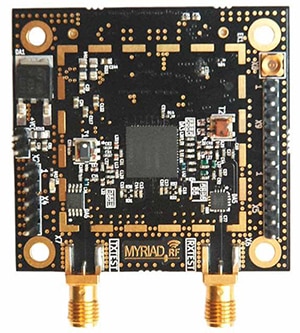Sensor Solutions: An Important Factor in Caring for the Elderly
投稿人:电子产品
2016-04-13
Society in many countries around the world is graying. The percentage of young men and women first joining the workforce is less than the number who are entering a more sedentary and, unfortunately for many, debilitating time. Aging is a battle we will all lose eventually, but the underlying question is this: How can the few care for the many while still enjoying a fruitful life themselves?
Humanity is not about to set our elderly afloat on an iceberg, so caring for them is the only option. However, drastic increases in afflictions such as dementia and similar conditions that reduce the ability of people to take care of themselves are exacerbating the problem. There are just two options: either more people monitor these patients, or technology allows fewer people to monitor greater numbers more efficiently.
This article looks at sensor-based design approaches and possible architectural solutions that can be used to monitor and protect the elderly. All parts and information referenced here are available on the DigiKey website.
Independent living
Going forward technology is expected to make a big difference in the quality of life of our elderly, particularly for those who are able to live alone or who will not voluntarily go into assisted living facilities. A fall-detection sensor is a good example of a device that can save lives by quickly summoning help for someone who has fallen, especially when previous solutions such as emergency call buttons fail to work because the victim has lost consciousness and/or does not have the ability to move. The widespread use of cell phones, smartphones, and tablets has resulted in the availability of reliable, low-cost multi-axis accelerometers for inclusion on elderly care devices. Take, for example, the 3-axis MEMS-based FC30TR from STMicroelectronics. This small, surface-mount gravity-referenced 14-pin part features high-shock survivability and provides orthogonal 6-position 3D sensing. It is ideally suited for use in a fall-detection sensor.
A particularly interesting aspect of the FC30TR in this regard is how interfacing to a low-power, mixed-signal embedded processor is simplified using interrupts for portrait and landscape changes. A 3-bit truth-table-like interface indicates motion in each of 6 relative position changes all referenced to gravity (Figure 1). This lets a microcontroller sleep, dissipating less power until needed. The part also can function as a tap detector and double as an emergency call button as part of an integrated solution.

Figure 1: With gravity as a constant reference, 3-axis detection can be used to indicate a fall.
Similar parts are available from Freescale (MMA8652FCR1) and Analog Devices (ADXL343BCCZ); both are small-size, low-power, low-cost 3-axis accelerometers featuring serial buses like I2C and SPI as a means of connectivity.
The Analog Devices part is notable because it features a “Free Fall” bit in its status register that can trip an interrupt if a free-fall state is detected for longer than a pre-determined (and programmable) threshold of time. A similar bit in a status register also functions as a tap detector as well, providing interrupts for single- and double-tap detection (Figure 2).

Figure 2: Single- and double-tap detection can allow the same fall-detect sensor to double as an emergency call button, providing a more integrated solution.
To aid in the rapid learning and development process using accelerometers, educational kits like the Parallax 28028 and several sub-$50 kits like the ST STEVAL-IDI003V2, Mikroelectronika MIKROE-1941, and Sparkfun SEN-12786 can teach and test several competing technologies without a major expenditure of time or funds.
Wanderlust
Elderly folks that have lapses in memory can wander, sometimes just walking out of their homes (or even from an assisted living facility) unescorted and not knowing where they are.
When within a prescribed space several technologies can provide a workable solution. Simple RFID tags in a wristband, for example, can indicate when someone has crossed a threshold. This is the same low-cost widely deployed technology that stores have used for years as an anti-theft technology.
One of the biggest appeals to RFID is that the actual RFID tag does not need power. All energy required to read and even write to the tag comes from the RFID reader. Like accelerometers, RFID demo, evaluation, and learning kits are readily available from DigiKey.
RF transponder tags can be read only (Generation 1) for lowest cost, or read/write (Generation 2 such as the Avery Denison 600465) allowing each wristband to hold patient-specific information that can be updated in real time. Avery Denison also offers a good RFID Product Training Module to assist development.
When outside a known and controlled facility, the only way to find and track a person who may be wandering around in a fog is through a communications network. Modular solutions are best for time-to-market concerns, especially as there are national and international standards to contend with. GSM, EDGE, and GPRS wireless modules can be used for trials and feasibility tests, but ultimately designing and certifying your own design using single-chip, cell phone transceiver ICs may be the most cost-effective solution for high-volume designs.
Here, parts like the LMS6002D Field-Programmable RF (FP-RF) Transceiver IC from Lime Microsystems can be used while transitioning from modular to discrete in a concurrent engineering design cycle. This peripheral-style cell-phone-on-a-chip can be coupled to your embedded process to provide global connectivity to either a point-to-point location or as a cloud-based aggregator that verifies the location and state of the tracked individual. A Lime Microsystems training module and an evaluation kit (designated MyriadRF) are both available.

Figure 3: Resources like development kits and evaluation units for cellular connectivity to the Internet of Things can allow concurrent design techniques to minimize time to market as well as lower eventual costs. (Shown: Lime Microsystems Myriad RF)
It is important to note that not only location is of interest. Medical devices may need to communicate to a remote server to enable healthcare reporting in real time and allow doctors to manipulate the infusion of medication, adjust heart rate, and detect coronary events. Here, use of cellular services can provide the highest level of connectivity.
However, if critical time-based functionality is not needed an alternative may be Wi-Fi. With many available Wi-Fi hotspots, a lower-cost solution would be for an embedded sensor-based system to search for open links and report in this manner. This solution also would eliminate the costly subscription to active cellular service otherwise required.
Wi-Fi further can be used to locate a wandering individual in two ways. The first way is in report mode: whenever an open link is sensed, the device passes through a message. The link route indicates the origin so the monitoring service can geo locate and even re-create a historic map of the person’s whereabouts. The second way is in transponder mode. Here, a handheld tracker can be carried along with a search team to find where the responding signal is coming from.
Like other key pieces of this puzzle, Wi-Fi modules and Wi-Fi chips are readily available to engineers as are Wi-Fi development kits. Concurrent engineering techniques can be used while transitioning from modules to finished designs, and if you investigate you will find many single-chip Wi-Fi transceiver manufacturers provide source code for the Wi-Fi stacks, providing a cost- and time-effective solution.
In summary
While we can’t reverse aging we can all get old safely and in a way that gives us the best chance of obtaining care when we need it. As we have discussed in this article, sensor-based design solutions, particularly when used with an efficient means of wireless communication, will enable us to do so without an unmanageable manpower and financial burden on society.
For more information about the parts mentioned in this article, use the links provided to access product pages on the DigiKey website.
免责声明:各个作者和/或论坛参与者在本网站发表的观点、看法和意见不代表 DigiKey 的观点、看法和意见,也不代表 DigiKey 官方政策。








